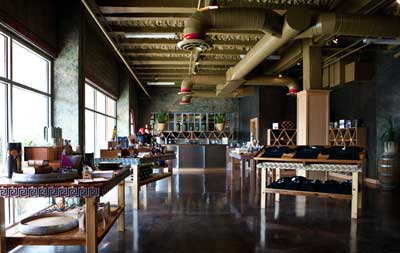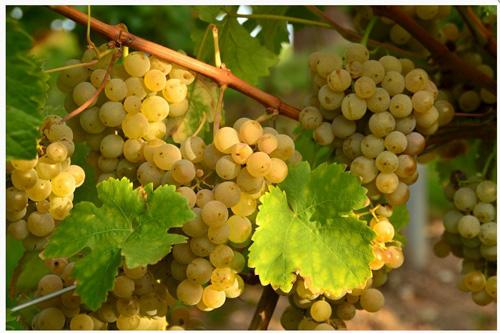Manifesto: Three Lessons for Texas Winemakers to Live By
I stopped by for a visit with Kim McPherson, known as “K Mac” to some in Texas; he’s proprietor and winemaker at his McPherson Cellars winery in Lubbock, Texas. His family line, namely his father Clinton “Doc” McPherson, goes back to the genesis of the modern Texas wine experience that took root in the 1970s. Even Kim himself is old enough to have had his fingers in some of the first commercially produced vinifera wines made in Texas.
I’m up in these parts for long time Texas winegrower, Neal Newsom’s Field Day and a following tour of the Texas high plains wineries and vineyards on Saturday. I find Kim McPherson one of the more pleasurable people to visit in the whole dang state when it comes to talking wine…Texas wine. Why? Because he doesn’t sugar coat the conversation about Texas wine: where it’s come from and how it’s doing now. Consequently, I trust his insights regarding where it’s likely to go in the future.
Kim readily admits that its hard work making Texas appellation wines, and in some years even he can pull it off. I last talked to him in 2009, which was a horrible year due to the severe late spring freeze that decimated that year’s harvest of Texas grapes. By some estimates, it was only 30-50 percent of what it could have been in the absence of the freeze. That was about as ‘dark” as I had seen him, except for maybe a period before he started his winery.
But, on this visit in 2011, Kim leaned more toward optimism, not outright cheer and bliss mind you. However, coming off a great statewide 2010 harvest, he sees some progress toward making the industry more sustainable going forward. However, now he frets that people have to get with the program.
We sat in the small laboratory in his avant-garde-meets-desert-landscape-meets-early-coca-cola styled destination winery in downtown Lubbock and we talked about what he feels are “lessons to live by” for those that want to make the Texas wine industry succeed and help it join the ranks of the major wine-producing states and wine producing regions of the world. It really isn’t hard in concept; perhaps a bit more complicated in practice. To me, his manifesto seemed to boil down to three rules:
1. Grow “warm weather” grapes. For the most part, these are grapes from the Mediterranean region of Europe that includes parts of Spain, Italy and southern France. Not all are suited for Texas, but he feels that there are good ones that actually “like” being here in Texas. Actually, on my last visit, he suggested that Texas should select its best six varieties of Vitis vinifera (European wine grapes), saddle up and be prepared to ride with them. Three red and three white (well almost). Today, his selections for reds grapes were Tempranillo, Mourvedre, and Cabernet Sauvignon with Cabernet relegated to the second-string of Texas grapes to be used as a blender with other grapes like Tempranillo or Sangiovese. Other reds such as Syrah, Grenache and maybe even Sangiovese, he would move into a category of red grapes that seem to make better Texas Rosés than red wines. As for his list of three white wine grapes, Kim started with Viognier and Roussanne, but then he stopped and thought a while. Then, he decided that rather than a third white wine grape, Texas should focus (as they do in many Mediterranean regions) on Rosés: pink wines made dry and crisp.
2. Place more emphasis on blended wines. If you look at most major wine growing regions around the world, they’ve made their reputation on blended wines rather than single varietal wines. This allows the winemaker the flexibility to craft the best wine he/she can with the particular grapes the vintage provided. Think about Bordeaux and Rhone Valley wines, they are all blends of grapes that have developed and grow in these regions. Single varietal wines were an invention of California. It made selling wines easier and the relatively consistent growing growing conditions made it possible to make Cabernet and Chardonnay in a consistent manner year after year. In Texas, we have a much more variable situation with weather (again similar to that in Europe). Blending will allow both growers and winemakers more flexibility to go with the best that the particular year’s harvest gives them. Blends with proprietary names allow for consistency in the marketplace, rather than have one year where a particular grape variety, say Sangiovese, is dark and rich followed by a year where the Sangiovese is weak, or another year when there wasn’t enough produced to be commercial. If used as part a blended wine, say with Cabernet, Nero d’Avola or other Italian red varieties, a Sangiovese-based blend would likely be both a better made and better received. The differences in the blend from year-to-year make for good discussion points in the tasting room and around the dinner table, too.
3. Since by and large, the Texas wines that Kim was pontificating about are not in the standard “California Set” of Cabernet, Merlot and Chardonnay, Texas winemakers will have to do what Kim calls “hand selling”. This means winemakers will have to develop relationships with restauranteurs, sommeliers, retailers, media and even consumers one-on-one or through social media to get the new gospel of Texas wines across to the wine consuming public. This Texas gospel of Mediterranean varietals, blends and year-to-year differences is a message much more in keeping with the old world wine experiences than with that of California. Is this a bad thing? In my book, not at all.



No doubt, rules to live by for Texas wine! Big fan of McPherson wines…glad to hear thoughts of the man behind one of my favorite Viogniers.
It’s too early to give up on a third Texas white. Marsanne, Verdelho, Vermentino, Vernaccia (if anyone had the guts to try it) and perhaps, now that nursery stock is available in this country, Verdejo, are all possible candidates.
Kim is dead on with his observations about warm weather varietals, blending for complexity (field blending is even better), and having to hand sell the product. When Alamosa started in 1998 with what we called climate adapted varietals we were very much alone in trying to market Sangiovese, Tempranillo and Viognier. In the intervening 13 years we have seen a huge change in the willingness of Texas vineyards and wineries to try varietals that have no or limited name recognition in the market. We’ve seen things that work and some that don’t, that’s how the process works. The point is that what starts as a novelty or niche wine catches on and becomes the basis of a whole new genre of Texas wine if it works. We’ve seen that with Viognier, we’ve seen it with Tempranillo, and we will see it with other varietals to come.
Kim is the dean of Texas winemakers and is making some great wines that aren’t Chardonnay, Cabernet and Merlot and I salute him for that.
Jim Johnson
Alamosa Wine Cellars
How can larger Texas wineries, many of which have to survive on non-Texas grapes start to implement such a business model? To me, that is the big question for Texas wine future.